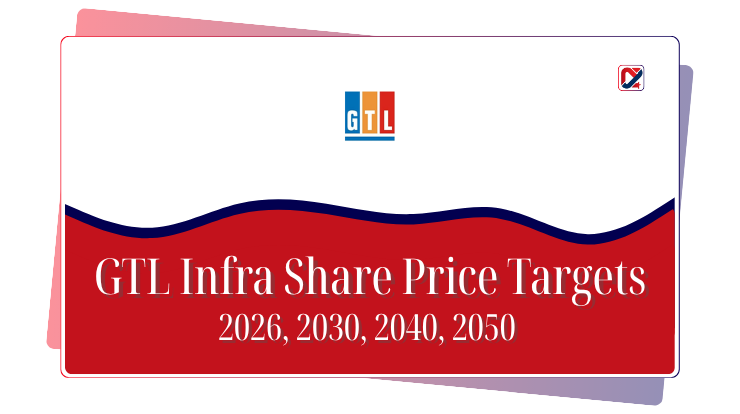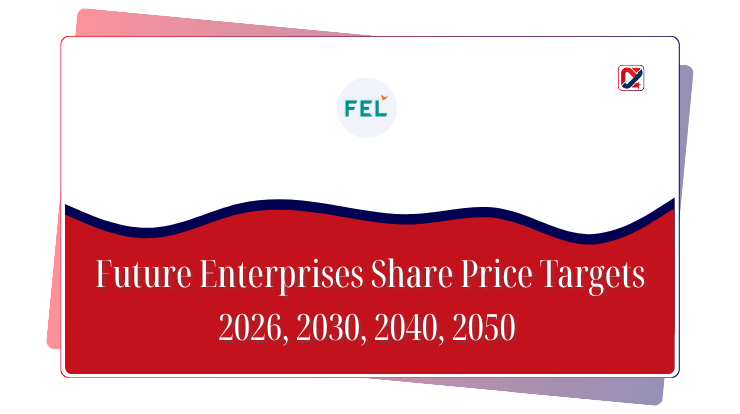FCS Software Solutions Ltd is an India-based IT services and IT-enabled services (ITES) company offering application development & maintenance, e-learning/digital content, infrastructure management, product development and more. The company has a long history (founded as Fateh Computer Services in 1993) and a global delivery footprint. However, recent financials show a decline in revenues and margins, limited growth and modest returns. Given its low share price and small market cap, some investors look at long-term share price targets (2026, 2030, 2040, 2050) on the basis of a turnaround or niche revival. These projections are scenario-based and not guarantees of performance.
Table of Contents
FCS Software Solutions Ltd commenced in May 1993 as Fateh Computer Services Pvt. Ltd., later converted to a public limited company and renamed in 2000. Headquartered in Noida, Uttar Pradesh, it provides IT & IT-enabled services (software development/maintenance, e-learning, infrastructure management) across India, the Middle East, the US, and Europe. Recently, the firm’s growth has been muted, revenue has been under pressure, and returns have been low. On the back of weak financial metrics and modest business momentum, the share price is low, leading some long-term investors to explore what the stock could do if a revival happens. But due to risks in execution and market competition, any forecast must be taken with caution.
Company Overview
Business Model & Segments
The company offers a wide array of IT / ITES services: application development & maintenance, e-learning/digital content management, infrastructure management, product development (including AI/ML, big data), and remote operations. It also does real estate/infrastructure lease & letting of properties (IT infrastructure premises) as part of the business. Geographically, the business spans India (offshore centres), the Middle East, and the US/Europe.
Key Facts & Snapshot
Market cap is modest (several ₹ hundreds of crores) and share price trading in the low-₹2 range. For example, one snapshot shows a share price of ~₹2.41 with a price/book ~ 2.42. Financial state: According to balance sheet data for March 2025: Equity share capital ~₹170.96 cr, reserves & surplus ~₹160.09 cr → net worth ~₹331 cr. Secured loans are zero in the latest year (earlier there were some). However, revenue has been stagnant or declining: For example, consolidated net sales for the June 2025 quarter: ₹8.31 crore, down ~9.5 % y-o-y. Standalone June 2025 net sales: ₹6.22 crore, down ~31 % y-o-y. Return metrics are weak: ROCE ~0.97 % and ROE ~0.70 %.
Historical Performance & Financials
Here is a table summarising selected recent years and key financials:
| Year | Net Sales Approx. | Net Profit / Loss / Key Event |
|---|---|---|
| FY 2023 | ~₹37.15 crore | Small profit or marginal result |
| FY 2024 | ~₹36–37 crore | Loss ~₹13.9 crore (standalone) |
| FY 2025 | ~₹33-34 crore | Some recovery but very modest; Sales down substantially in certain quarters |
Key metrics & observations:
- Revenue is almost flat or slightly declining: growth has been weak for several years.
- Profitability is volatile: some years show small profits, others show losses.
- Return on equity and capital employed are very low, signalling limited operational efficiency and value creation.
- On the balance sheet side, the company is relatively debt-light (secured loans = 0 in FY2025), but the leverage of growth is minimal, and business momentum is weak.
Key Assumptions for Forecasting
Growth Drivers
- If FCS can pivot or expand into higher-growth segments (AI/ML, big-data analytics, e-learning/digital transformation) then there is potential for better growth.
- The company’s legacy infrastructure (delivery centre, offshore presence) may provide a base for cost-effective delivery.
- Being debt-light gives some flexibility: if management executes well and invests in growth, there is room for improvement.
Risks & Challenges
- The IT services market is highly competitive with major players; for small firms, margin pressure and client churn risk are high.
- Revenue decline and weak growth suggest the company has not been able to scale meaningfully; scaling is critical to improve profitability.
- Return metrics are poor, which means investors may remain sceptical.
- The low share price and low market cap may limit interest and liquidity in the stock.
- Execution risk: pivoting into higher growth areas requires investment, talent, and customer wins — not guaranteed.
Given the available data and the mixed outlook, we’ll present scenario-based share price targets with different assumptions regarding execution and growth.
Share Price Target Forecasts
| Year | Bear Case | Base Case | Bull Case | Key Assumptions |
|---|---|---|---|---|
| 2026 | ₹1.50 | ₹3.00 | ₹5.00 | Moderate improvement: modest growth, cost control, slight margin improvement |
| 2030 | ₹2.50 | ₹6.00 | ₹12.00 | Meaningful growth: entry into higher margin segments, steady performance, improved client-wins |
| 2040 | ₹5.00 | ₹15.00 | ₹30.00 | Meaningful growth: entry into higher margin segments, steady performance, improved client wins |
| 2050 | ₹10.00 | ₹30.00 | ₹60.00 | Major transformation: company becomes mid-sized global IT/ITES player with diversified offerings and strong global presence |
Analysis:
- 2026: In the bear scenario, the stock may drift or decline if growth remains weak and investor interest stays low. The base case assumes some turnaround with incremental revenue/margin improvement, lifting the price to ~₹3. The bull case would require visible change — e.g., new high-margin contracts, significant growth — to reach ~₹5.
- 2030: The base case assumes the company has executed a credible growth strategy, started diversifying services, improved margins, and scaled delivery. The bull case imagines that FCS becomes a small but meaningful player in niche high-growth areas (AI/ML, big data outsourcing), reaching ~₹12. The bear case stays subdued at ~₹2.50 if current inertia continues.
- 2040: Over the long term, the base case projects that sustained growth and scaling push the stock to ~₹15. The bull case envisions the company achieving leadership in selected niches and a global delivery model, reaching ~₹30. The bear case still reflects moderate improvement to ~₹5 if growth remains minimal, but the company survives.
- 2050: In the base case, assuming consistent growth, diversification, global footprint, and improved margins, the stock could reach ~₹30. The bull case imagines a major transformation into a global mid-tier IT/ITES firm, maybe leveraging acquisitions, overseas delivery centres, and a strong brand, so ~₹60. The bear case assumes slow growth and modest value realisation (~₹10).
Note: These are purely illustrative scenarios based on assumptions of scale, margin expansion, and business pivot. They are not guarantees of performance.
Growth Drivers & Catalysts
- Rising demand for digital transformation, AI/ML, e-learning solutions, and big data analytics may benefit smaller agile firms.
- Ability to niche into underserved segments (for example, multilingual help-desk BPO, digital content development) where larger players might not focus.
- Low debt gives flexibility: if management reinvests wisely and wins some new large contracts, the company could pivot.
- Potential geographic expansion: Middle East, the US, and Europe presence could be leveraged for global delivery.
Risks & Challenges
- The long history of very low growth and declining revenues means the company must change its trajectory to justify higher valuations.
- Competition from large IT services firms and offshore models (e.g., low-cost countries) may continue to suppress margins.
- Execution risk: pivoting into new areas (AI/ML, digital transformation) requires talent, infrastructure, and client trust — which may take time.
- Liquidity and market interest risk: The Stock is a small-cap, with low trading volume, which may make it unattractive to large investors.
- Industry cyclical risk: IT/ITES firms are dependent on global demand and client budgets, which may fluctuate with macroeconomics.
Expert & Market Sentiment
Market commentary for FCS Software is limited, as expected for a small-cap IT services firm with muted growth. The company is almost debt-free, trading near book value (e.g., book value ₹1.94 per share), but growth remains poor. A recent report noted that consolidated net profit declined by ~68% in the June 2025 quarter, highlighting operational headwinds. Analyst coverage is sparse, and investor sentiment remains cautious given the growth profile.
FAQs
What business does FCS Software Solutions Ltd operate?
It offers IT services and IT-enabled services, including application development & maintenance, e-learning/digital content, infrastructure management, remote operations, and property leasing of IT infrastructure.
Is FCS Software a turnaround candidate?
Potentially yes — it has a debt-light balance sheet and a long history, which gives it some flexibility. But it would require effective strategy execution, client wins, and margin improvement.
What are the main risks in investing in FCS Software?
Key risks include weak growth, margin pressure, heavy competition, low returns, execution risk in pivoting to higher-growth segments, and low visibility among investors.
What would need to happen for FCS Software to reach ₹12 by 2030?
The company would need to consistently grow revenue by double-digits for several years, shift into higher-margin service lines (e.g., AI/ML, digital transformation), expand globally, improve utilisation, and show strong profitability.
What is the current share price/book value and market snapshot?
The stock is trading around the low ₹2 range (example ~₹2.18) with a book value of ~₹1.94 per share. ROCE and ROE are very low (<1%).
Conclusion
FCS Software Solutions Ltd is a small, under-the-radar Indian IT/ITES firm with a long history and modest operations. On the plus side, it has a debt-light balance sheet and some global delivery infrastructure. On the downside, growth has been weak, margins are low, returns are almost negligible, and investor interest limited. The scenario-based price targets for 2026, 2030, 2040, and 2050 illustrate a wide spread—from modest improvement to major turnaround—depending on execution. If management can successfully pivot, win new high-margin contracts, and scale globally, there is potential upside. But if business remains flat, the downside remains real. If you’re considering this stock, treat these forecasts as educational and speculative. Do your own research, watch for signs of execution and growth, and proceed with caution.



